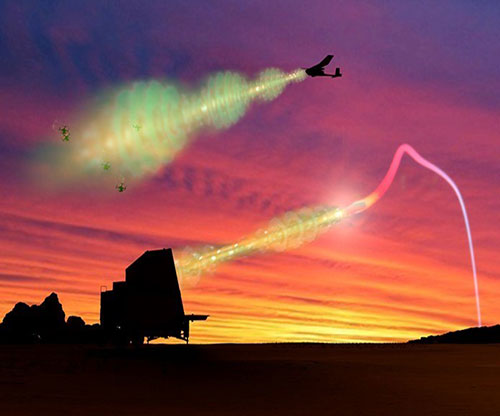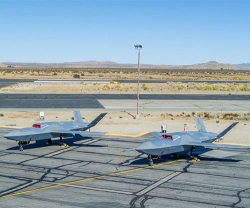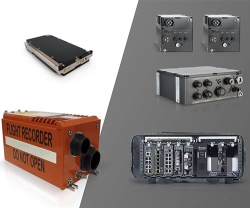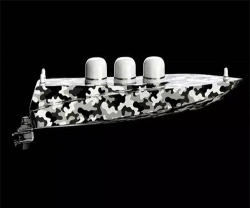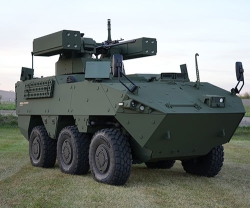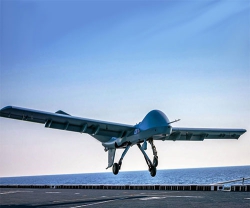Raytheon Missiles & Defense is developing robust high-power microwaves – disruptive technology that is changing warfare, potentially offering new defense against enemy drones and hypersonic weapons. These are two of the biggest threats to U.S. and allied military power, and they could hardly be more different.
One is the hypersonic missile, which travels at more than five times the speed of sound and can strike targets at great distances. The other is the UAV, or unmanned aerial vehicle – particularly off-the-shelf drones modified into cheap weapons that are prohibitively expensive to defeat.
Different as those threats are, there’s one single emerging technology – the high-power microwave – that could play a huge role in defending against both.
High-power microwave systems, which use highly concentrated radio energy to damage their targets’ electronics, are among the options that Raytheon Missiles & Defense, a Raytheon Technologies business, is partnering with the U.S. Department of Defense to explore as part of a layered approach to air defense.
“Our adversaries are coming up with increasingly sophisticated and innovative ways to attack us,” said Colin Whelan, Vice President of Advanced Technology for Raytheon Missiles & Defense. “We need lower cost solutions to counter them.”
The business is building a set of technologies that fall into three categories:
- Small-scale systems for short-range air defense
- Larger systems for longer-range air defense
- Small airborne high-power microwave payloads for maneuverable platforms like UAVs
Harnessing the Power of Energy
The advantage of high-power microwaves and other directed energy weapons is that, once they’re built, they’re inexpensive to fire - and their ammunition is limited only by the availability of power. That makes them well-suited to take on drones that attack by the dozen.
“This technology makes it possible to knock out a whole swarm of electronic threats in a single shot,” Whelan added.
Raytheon Missiles & Defense’s Advanced Technology group, an elite team of innovators, is helping the U.S. military explore how they may integrate high-power microwave technology into aircraft, cruise missiles, surface ships and ground vehicles. Paired with high-energy lasers, microwaves would give military commanders a powerful directed energy one-two punch.
Just as high-power microwaves use concentrated radio energy, lasers project beams of light particles on to their targets. But while lasers burn into their targets, high-power microwaves attack their electronics.
“We crank up the power to create enough energy to electronically disrupt a target. It causes the drone to fall out of the sky,” said Paul Head, who leads high-power microwave programs at Raytheon Missiles & Defense. “It causes the drone to fall out of the sky.”
Speed of Light Versus Sound
High-power microwaves have an important edge over hypersonic weapons – they’re much faster. While hypersonic weapons travel more than five times the speed of sound -0 343 meters per second or higher - high-power microwaves travel at the speed of light – 300 million meters per second.
“When it comes to defeating a threat that pushes the limits of a physical object’s speed, you naturally look to a defense that moves at the speed of light,” Whelan said.
Hypersonic weapons are also maneuverable; they can swerve to avoid detection and even loop around adversary-facing missile defense batteries. But defenses that move at the speed of light still have the edge, Whelan said.
“It doesn’t matter how maneuverable an adversary is,” he said. “They are going down if you have speed-of-light defenses.”
A Virtual Proving Ground
The innovation doesn’t stop there. Advanced Technology is using digital engineering methods such as modeling and simulation to prove to the greatest degree possible that high-power microwave technologies work before costly prototyping.
“We call it pushing the ‘I believe’ button,” Head said. “With our powerful modeling platforms, in conjunction with live test data, we can show that the system works and adds significant benefit to a modern layered defense in terms of cost and magazine depth.”
The modeling platforms allow the business to demonstrate the directed energy’s effect on target is both predictable and measurable, offering the best defense for a mission.
“We have a strong understanding of the effects these weapons have and the platforms they are designed to counter. We are maturing the technology and look to demonstrate high-power microwaves in the field,” Head concluded.

